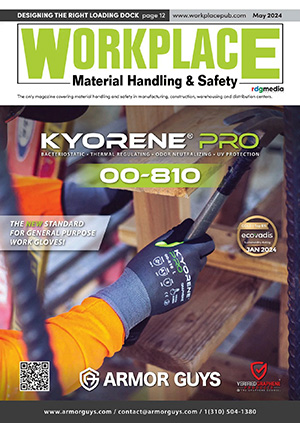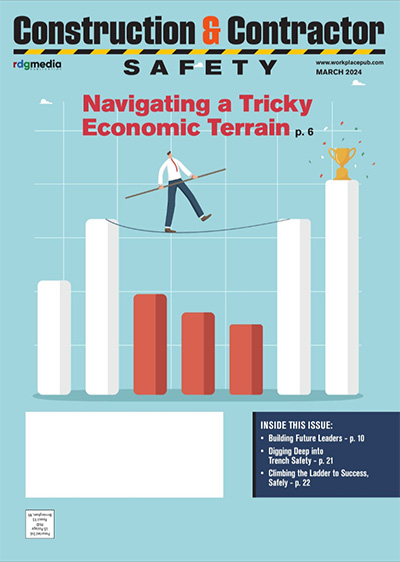Pressure Increases to Implement Safe Alternatives to Compressed Air
Growing awareness of the dangers and potential liabilities of compressed air has industries and institutions exploring new options
 Compressed air systems are so commonly used in commercial, industrial, and institutional settings that they are often incorrectly assumed to be safe, or less potentially dangerous than they actually are. In fact there are numerous hazards associated with the use of compressed air, and accidents and injuries involving compressed air cost US business millions of dollars each year. These costs are both direct and indirect, involving medical emergencies, equipment damage, production wastage, production downtime, as well as rising insurance costs and increased regulatory burdens.
Compressed air systems are so commonly used in commercial, industrial, and institutional settings that they are often incorrectly assumed to be safe, or less potentially dangerous than they actually are. In fact there are numerous hazards associated with the use of compressed air, and accidents and injuries involving compressed air cost US business millions of dollars each year. These costs are both direct and indirect, involving medical emergencies, equipment damage, production wastage, production downtime, as well as rising insurance costs and increased regulatory burdens.
Compressed air poses three distinct inherent risks: from airborne particulate matter, from high levels of air pressure, and from excessive noise. These risks are increased exponentially when compressed air technology is used in an unsafe or negligent manner, and also when the equipment associated with compressed air systems is not maintained in optimal condition. Thousands of accidents occur in US workplaces each year because employees are improperly trained or insufficiently aware of the potential dangers of compressed air, and thousands more are the result of improperly installed or maintained systems and worn or damaged system components.
Beyond these immediate risks, compressed air systems have proven to be costly to install, operate, and maintain at a level that is fully compliant with changing safety regulations. Furthermore, in many applications the existence of high-pressure compressed air for pneumatic operations may increase employer liabilities and substantially impact the cost of insurance.
In recent years, evolving workplace safety regulations and increased awareness of the risks and costs associated with traditional compressed air technologies have created a rapidly expanding market for a new generation of low-pressure blower systems for use where compressed air would pose an unacceptable level of risk either to equipment or personnel. These systems are typically designed to limit exposure to pressurized air streams and airborne particulates, and operate at noise levels well within regulatory guidelines. An unexpected benefit of these alternative systems is that they are also generally less expensive to operate and maintain.
A matter of airborne particulates
Compressed air systems do not deliver clean air. The airflow produced by these systems, which include a compressor or compressors, hoses, clamps, fittings, and nozzles, contains trace amounts of oil, water, dust, and other microscopic particulates, many of which cannot be eliminated even with the use of
filtering equipment. Over time the levels of these contaminating substances will only increase. In many instances, the system will also recycle additional particulate matter generated by the process or processes occurring within a given facility. This particulate matter can compromise and even defeat air filtering systems and clean air protocols in many industrial facilities.
These particulates pose dangers for both plant personnel and equipment. If compressed air is used to clean off machinery, dirt and debris may be inadvertently blown into the equipment; in some cases this can have serious effects on performance. The dangers are even more pronounced when compressed air is directed, for whatever reason, at operators or other personnel. The high pressure of compressed air can force even microscopic debris and particulates into the eyes, nose, mouth, other bodily orifices, and open cuts and wounds, resulting in infections and permanent injuries. Thousands of such cases are documented each year in the US alone, driving up insurance costs. Medical researchers have documented hundreds of horrific injuries from compressed-air related workplace accidents.
Installation of a standalone, low-pressure personnel blow-off system that complies with federal safety regulations can ensure a clean stream of safely pressurized air, free of significant particulate matter and suitable for on-site cleanup of both machines and operators.
High pressure equals high risk
The optimal operating pressure for compressed air systems in industrial and manufacturing applications is typically between 80 and 120 psi, although some systems specify even higher pressures. These pressures can cause severe injuries if the compressed air is directed at personnel, even accidentally and for a short time. As such, compressed air systems are NEVER suitable for blowing dust or debris off of clothes or bare skin. Unfortunately easy access to compressed air lines in factories and warehouses means that these dangers are often ignored, even where company procedures prohibit the use of compressed air. Cleaning of machinery with compressed air creates blowback which may contain wood or metal chips and other production-related debris.
The potential for even more serious injury exists wherever compressed air may enter the body through an orifice (eyes, nose, mouth) or an open cut or wound. Each year in the US, severe injuries and even deaths occur when workers are unaware of or underestimate these risks. In addition to the possibility of particulate matter, oils, or dirt entering the bloodstream, even relatively clean highly pressurized compressed air can cause a range of serious and potentially fatal injuries.
Federal regulations require that nozzles for compressed air hoses include a pressure relief feature that reduces air pressure to 30 psi when the aperture is completely blocked, however even this specification still exceeds safe levels for aiming at personnel or delicate materials. To safely blow production debris off personnel, the installation of an OSHA-compliant, low-pressure system separate from the production compressed air system is essential. Federal regulations require that such systems include a chip guard to protect operators from potentially hazardous blowback.
Fears about ears
Air compressors and compressed air systems are known to be significant contributors to high levels of workplace noise, which is recognized as a hazard and regulated by OSHA, as well as state and local authorities. Even small compressors generate potentially harmful levels of noise and require that operators and other potentially exposed personnel use ear protection. Large industrial multi-unit compressor banks for plant-wide pneumatics operate at dangerously high decibel levels at all times.
Although in such situations the main compressors may be some distance away from production workers, the local discharge of pressurized air from these systems is still a serious noise hazard requiring protective measures.
In studies of industrial environments involving extensive use of compressed air for manufacturing and assembly, noise levels exceeding 120 decibels are common, with noise levels from hand tools of 95-110 decibels routinely recorded at the operator’s ear. Although protective measures can be effective in ameliorating this risk, safety compliance requires constant monitoring and enforcement which itself can become a significant expenditure.
High levels of noise are a particular concern for schools, colleges, art museums, and other institutions that may be using compressed air in shop, woodworking, and metalworking environments. With no real need for the high-pressure discharge from traditional compressors, the potential liabilities of compressed air systems may greatly outweigh any benefits. Awareness of noise hazard liabilities within these institutional markets has driven the development of alternative products that place greater emphasis on safety and regulatory compliance.
Decompress for safety
The real hazards and the alarming scope of potential liabilities associated with compressed air systems have only recently become fully apparent through a combination of scientific research, technological developments, and the accumulation of medical data from a growing database of case studies. This awareness has in turn spurred extensive new regulatory guidance, enforcement, and intervention. The evolving regulatory picture has resulted in rising costs for business owners in the form of expanded training requirements, greater compliance burdens, and increased insurance premiums.
This uncertain environment has created a demand for market alternatives such as low-pressure, lownoise systems that deliver clean air and adhere to or exceed OSHA and CE standards. These systems may be particularly attractive to educational and institutional markets where personal safety is paramount.
But even large-scale industrial operations committed to pneumatics can improve safety, ensure regulatory compliance, limit liabilities, and realize savings by deploying these safer alternatives for personnel and equipment clean-up.



